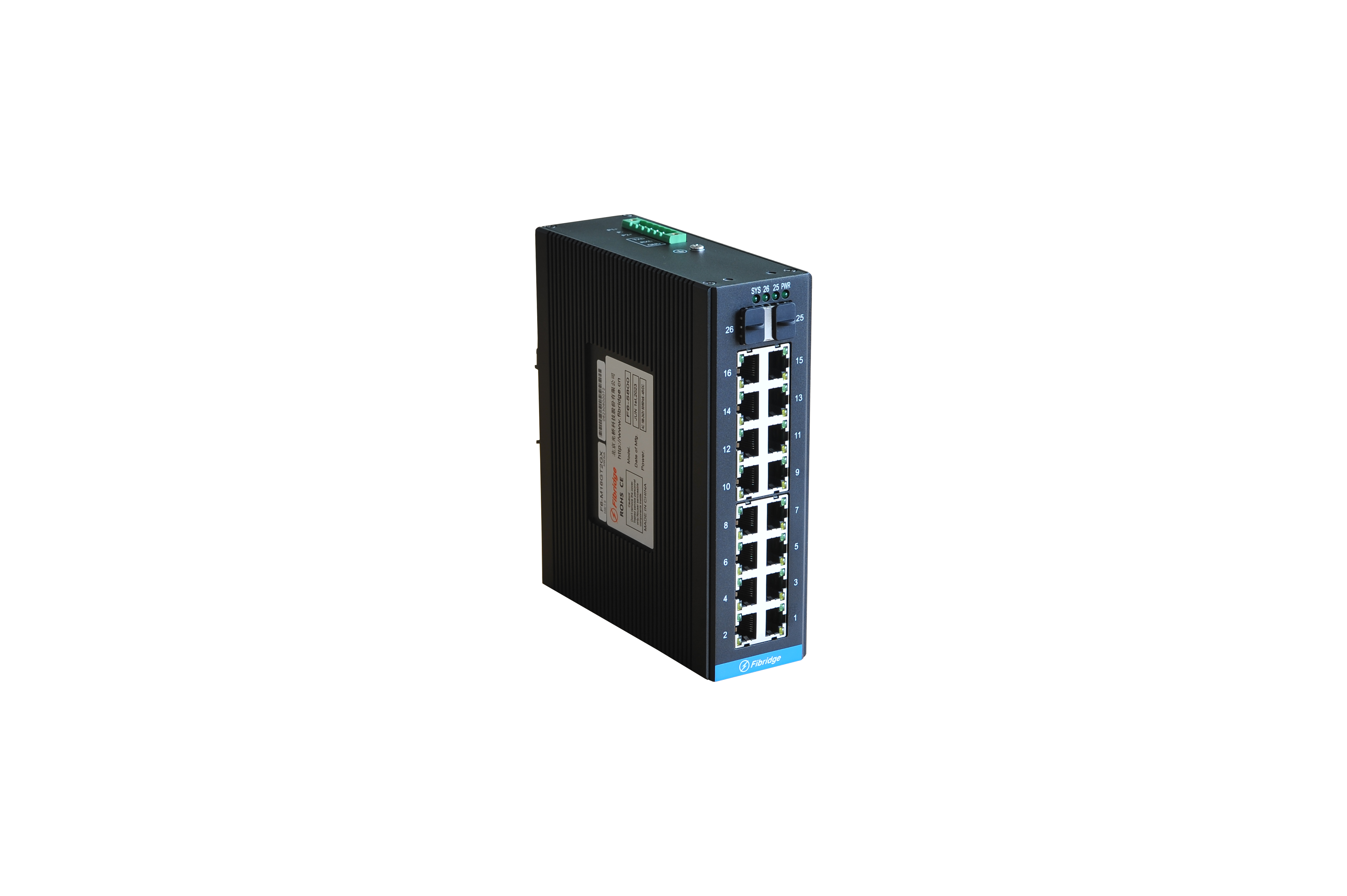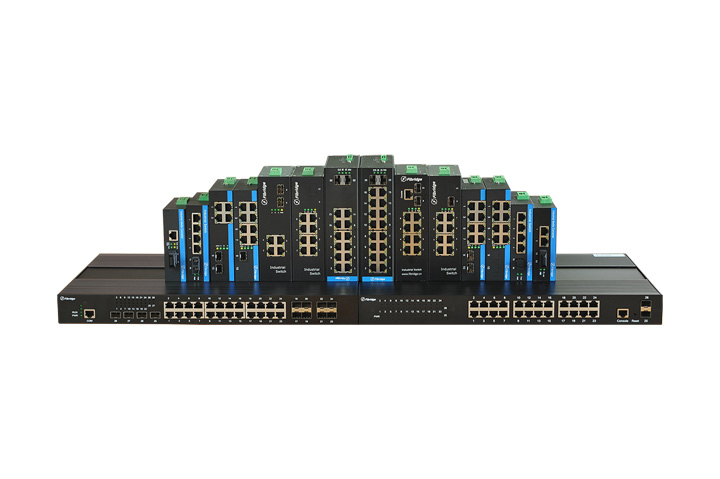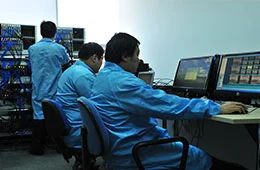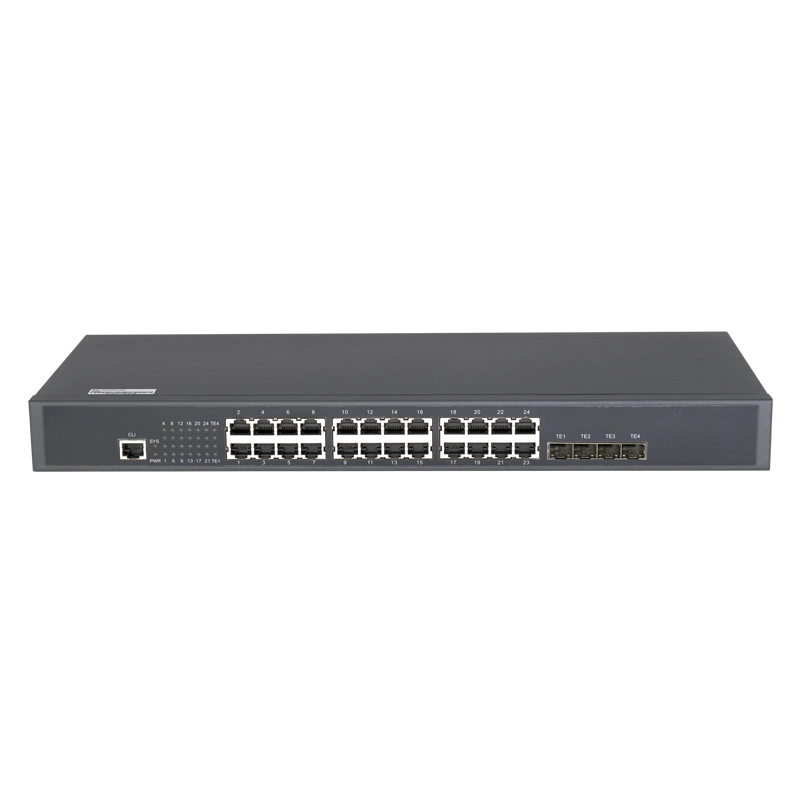
Nowadays, industrial switches play a crucial role in various industries, including energy, environmental protection, transportation, and smart city surveillance, with their demand growing day by day. This article will provide a comprehensive introduction to industrial switches to help you gain a deeper understanding.
An industrial switch, also known as an oem ethernet switch, is a network technology device designed for industrial environments. Its main function is to provide reliable, high-speed data transmission for industrial networks, including 10G industrial switches, to achieve faster transmission rates. Typically, industrial Ethernet serves as an economical and effective way to manage communication between various types of industrial equipment. Generally speaking, 10G industrial switches can withstand impacts, vibrations, and extreme fluctuations from -40°C to 75°C. Therefore, you will find that 10G industrial network switches play an important role in transportation, energy industries, and more.

Based on functionality and characteristics, as a network switch oem, industrial switches can be divided into managed or unmanaged industrial switches, industrial PoE switches or non-PoE switches, DIN rail switches or rack-mounted switches, etc. Here are the main characteristics of industrial Ethernet switches.
1. Excellent structure suitable for industrial environments. Industrial switches usually have a robust structure, for example, durable housings with protection levels of IP30, IP40, or higher. Some network switches even come with 6KV lightning protection to prevent damage from lightning strikes when used outdoors. Thanks to their sturdy and durable design, industrial network switches can stably transmit data in extreme temperatures ranging from -40° to 75°C.
2. Redundant power supply design. Power outage is an important factor affecting the failure rate of industrial switches. To avoid power failures, industrial network switches usually feature dual power supply redundancy. This design ensures connection stability and reliability in harsh environments.
3. DIN rail and wall-mounting options for flexible installation. Most industrial switches offer DIN rail or wall-mounting installation options. For DIN rail installation, it is an ideal choice for effectively utilizing cabinet space in harsh environments. Moreover, it also helps simplify installation. DIN rail industrial switches can be easily connected to standard component rail mounting systems or long metal bars within standard cabinet racks. Furthermore, industrial switches with DIN rail installation options indeed help protect sensitive electrical equipment.
4. Fanless design. Industrial switches generally use metal housing to accelerate heat dissipation instead of fans. The fanless design of industrial switches minimizes the problems of dust and moisture ingress. In this regard, industrial switches ensure long-term reliability in industrial applications.
As mentioned above, industrial switches provide high-performance and high-speed data transmission for industrial networks. Moreover, they come in different rates, ranging from 10G to 100G. Therefore, companies choose to use industrial switches for various reasons.
1. Tolerance in harsh environments: Industrial switches have a robust and durable design, capable of operating in extreme temperatures. They are an ideal choice for harsh working environments, such as oil and gas platforms, outdoor electrical applications, and more.
2. Reducing noise and interference: Industrial switches support fiber optics and high-speed cables. Long-distance transmission requires optical cables, as high-speed cables can only transmit data up to a maximum distance of 100m. In this case, industrial switches can reduce electrical noise and improve point-to-point network connection quality.
3. Simplifying networks: Unmanaged industrial switches are perfect for entry-level, low-priority networks. They provide basic packet filtering and support connections of 5~10 ports at a relatively lower price.
4. Enhanced functionality: Managed industrial switches offer advanced network management tools, such as improved traffic filtering, network topology, and device mapping, among others. Moreover, they provide high network security and help protect sensitive data transmitted over the network. Industrial switches capable of withstanding harsh conditions are essential because standard Ethernet switches cannot reliably and accurately transmit data in critical environments.
1. Industrial switches in the energy industry: For example, in underground mines, using industrial switches can effectively block dust, dirt, and other particles that might damage equipment.
2. Industrial switches in the transportation industry: Industrial switches equipped with industrial-grade protective structures like IP40 can withstand high-intensity vibration and shock, helping you capture data generated by moving objects.
3. Industrial switches in substations: A major challenge faced by power substations is high electromagnetic interference. A strong, reliable, and secure switch resistant to harsh environments is the answer to this problem. This is because industrial switches have strong anti-interference capabilities, allowing them to operate in harsh electromagnetic environments, unlike commercial switches that don't support these features.
4. Industrial switches in smart city surveillance: Using industrial PoE switches to provide power to your PoE devices, such as IP cameras in smart city surveillance, is a wise choice for monitoring crowds and traffic. Get a powerful industrial network PoE switch to enjoy the benefits of simplified wiring and equipment control more easily.
Regular switches and industrial switches may differ in working temperature, installation methods, and applications.
1. Appearance: Industrial switches generally adopt a fanless design and integrated metal housing for heat dissipation. Regular switches typically come with plastic or metal casings and fans for cooling.
2. Working temperature: Industrial data center ethernet switch can operate within a wide temperature range of -40℃ to 75℃, whereas regular switches can only work within a temperature range of 0℃ to 50℃.
3. Application scenarios: Industrial switches are designed to meet the needs of industrial environments, providing reliable network connections between machines and other equipment. Networks in homes or offices usually utilize standard network switches. They provide basic connectivity among devices on a single LAN.
4. Installation methods: Industrial switches can be installed in various ways, including rack-mounted, desktop, wall-mounted, and DIN rail. However, regular switches are typically installed on desks or in racks.
5. Power supply: In most cases, industrial Ethernet switches offer dual power supply redundancy. But most regular switches on the market typically support only a single power source.




 English
English русский
русский Español
Español français
français CN
CN